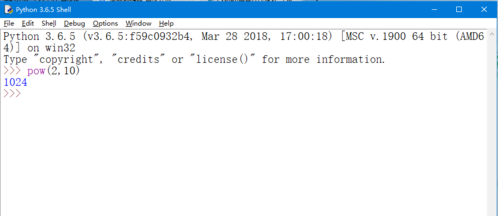IOC容器管理
- 一、IOC概述
- 1、什么是IOC(控制反转)
- 2、IOC底层
- 3、Spring提供的IOC容器实现的两种方式(两个接口)
- 二、IOC容器-Bean管理
- 1、Bean管理
- 2、基于XML配置文件创建对象
- 3、基于XML方式注入属性
- set方式注入
- 有参构造函数注入
- p名称空间注入
- 4、注入空值和特殊符号
- 5、注入属性-外部bean
- 6、基于XML方式注入内部bean和级联赋值
- a)注入属性-内部bean(嵌套bean)
- b)注入属性-级联赋值-方式一
- c)注入属性-级联赋值-方式二
- 7、IOC 操作 Bean 管理——xml 注入集合属性
- 8、在集合里面设置对象类型值
- 9、工厂Bean(Factory Bean)
- 10、Bean 的作用域
- 11、Bean 生命周期
- 12、配置外部属性文件
- 方式一:直接配置数据库信息
- 方式二:引入外部属性文件配置数据库连接池
一、IOC概述
1、什么是IOC(控制反转)
a)把对象创建和对象之间的调用过程,交给Spring进行管理
b)使用IOC目的:为了降低耦合度
2、IOC底层
xml解析、工厂模式、反射
3、Spring提供的IOC容器实现的两种方式(两个接口)
a)BeanFactory接口:IOC容器基本实现是Spring内部接口的使用接口,不提供给开发人员进行使用(加载配置文件时候不会创建对象,在获取对象时才会创建对象。属于预加载或者是懒加载。)
b)ApplicationContext接口:BeanFactory接口的子接口,提供更多更强大的功能,提供给开发人员使用(加载配置文件时候就会把在配置文件对象进行创建。一般采用监听器,监听服务,一旦开启tomcat服务就会加载配置文件,并且创建配置文件中所有的对象。虽然降低了启动服务的效率,但是提高了运行效率。)
二、IOC容器-Bean管理
1、Bean管理
Bean管理的本质就是实现两个操作:
(1)Spring创建对象;
(2)Spring注入属性(DI ,依赖注入)。
2、基于XML配置文件创建对象
加入把配置文件命名为bean.xml,向文件中添加:
<!--1 配置User对象创建-->
<bean id="user" class="com.atguigu.spring5.User"></bean>
其中,id为这条Bean的唯一标识,class表示对应的实体对象。
尝试在Test中创建对象:
public void test(){//1 加载spring配置文件ApplicationContext context = new ClassPathXmlApplicationContext("bean.xml");//2 获取配置创建的对象User user = context.getBean("user", UserService.class); //getBean中的第一个参数表示要获取的配置文件中的对象的iduser.add(); //调用user中的add方法}
3、基于XML方式注入属性
set方式注入
1.在实体类中添加属性的set方法。
//(1)传统方式: 创建类,定义属性和对应的set方法
public class Book {//创建属性private String bname;//创建属性对应的set方法public void setBname(String bname) {this.bname = bname;}}
2.在xml配置文件中进行属性注入
<!--(2)spring方式: set方法注入属性-->
<bean id="book" class="com.atguigu.spring5.Book"><!--使用property完成属性注入name:类里面属性名称value:向属性注入的值--><property name="bname" value="Hello"></property><property name="bauthor" value="World"></property>
</bean>有参构造函数注入
1.在实体类中添加有参构造函数。
//(1)传统方式:创建类,构建有参函数
public class Orders {//属性private String oname;private String address;//有参数构造public Orders(String oname,String address) {this.oname = oname;this.address = address;}}
2.在xml配置文件中进行属性注入
<!--(2)spring方式:有参数构造注入属性-->
<bean id="orders" class="com.atguigu.spring5.Orders"><constructor-arg name="oname" value="Hello"></constructor-arg><constructor-arg name="address" value="China!"></constructor-arg>
</bean>p名称空间注入
<!--1、添加p名称空间在配置文件头部-->
<?xml version="1.0" encoding="UTF-8"?>
<beans xmlns="http://www.springframework.org/schema/beans"xmlns:xsi="http://www.w3.org/2001/XMLSchema-instance"xmlns:p="http://www.springframework.org/schema/p" <!--在这里添加一行p--><!--2、在bean标签进行属性注入(算是set方式注入的简化操作)--><bean id="book" class="com.atguigu.spring5.Book" p:bname="very" p:bauthor="good"></bean>4、注入空值和特殊符号
1.注入NULL。
<bean id="book" class="com.atguigu.spring5.Book"><!--(1)null值--><property name="address"><null/><!--属性里边添加一个null标签--></property>
此时,book中的address属性为null。
2.注入特殊符号。
<bean id="book" class="com.atguigu.spring5.Book"><!--(2)特殊符号赋值--><!--属性值包含特殊符号1. 把<>进行转义 < >2. 把带特殊符号内容写到CDATA--><property name="address"><value><![CDATA[<<南京>>]]></value></property>
</bean>
此时,book中的address属性为<<南京>>
5、注入属性-外部bean
1.创建dao类和service类
public class UserDaoImpl implements UserDao {//dao类@Overridepublic void update() {System.out.println("dao update...........");}
}
public class UserService {//service类//创建UserDao类型属性,生成set方法private UserDao userDao;public void setUserDao(UserDao userDao) {this.userDao = userDao;}public void add() {System.out.println("service add...............");userDao.update();//调用dao方法}
}
2.在spring配置文件中进行配置
<!--1 service和dao对象创建-->
<bean id="userService" class="com.atguigu.spring5.service.UserService"><!--注入userDao对象name属性:类里面属性名称,对应java代码中我们想要定义的类名。ref属性:创建userDao对象bean标签id值,对应xml文件中我们想找到的对应的bean的id。--><property name="userDao" ref="userDaoImpl"></property>
</bean>
<bean id="userDaoImpl" class="com.atguigu.spring5.dao.UserDaoImpl"></bean>
6、基于XML方式注入内部bean和级联赋值
对于一对多、多对一的实体关系,假设:
部门Dept 和员工Emp ,一个部门有多个员工,一个员工属于一个部门(部门是一,员工是多),在实体类之间表示一对多关系,那么在员工的属性中想要表示所属部门,就需要使用对象类型属性dept进行表示部门。
部门类
public class Dept {private String dname;public void setDname(String dname) {this.dname = dname;}
}
员工类
public class Emp {private String ename;private String gender;//员工属于某一个部门,使用对象形式表示private Dept dept;public void setDept(Dept dept) {this.dept = dept;}public void setEname(String ename) {this.ename = ename;}public void setGender(String gender) {this.gender = gender;}
}
a)注入属性-内部bean(嵌套bean)
<!--内部bean--><bean id="emp" class="com.atguigu.spring5.bean.Emp"><!--设置两个普通属性--><property name="ename" value="Andy"></property><property name="gender" value="女"></property><!--设置对象类型属性--><property name="dept"><bean id="dept" class="com.atguigu.spring5.bean.Dept"><!--内部bean赋值--><property name="dname" value="宣传部门"></property></bean></property></bean>b)注入属性-级联赋值-方式一
<!--级联赋值--><bean id="emp" class="com.atguigu.spring5.bean.Emp"><!--设置两个普通属性--><property name="ename" value="Andy"></property><property name="gender" value="女"></property><!--级联赋值--><property name="dept" ref="dept"></property></bean><bean id="dept" class="com.atguigu.spring5.bean.Dept"><property name="dname" value="公关部门"></property></bean>c)注入属性-级联赋值-方式二
<!--级联赋值--><bean id="emp" class="com.atguigu.spring5.bean.Emp"><!--设置两个普通属性--><property name="ename" value="jams"></property><property name="gender" value="男"></property><!--级联赋值--><property name="dept" ref="dept"></property><property name="dept.dname" value="技术部门"></property></bean><bean id="dept" class="com.atguigu.spring5.bean.Dept"></bean>但是要注意,方式二中,想要使用dept.dname直接表示dept的name,必须在emp实体中定义getDept方法,否则无法找到dept对应的属性。
//方式二:生成dept的get方法(get方法必须有!!)public Dept getDept() {return dept;}
7、IOC 操作 Bean 管理——xml 注入集合属性
注入数组Array类型、 List 集合类型 、Map 集合类型属性
//(1)创建类,定义数组、list、map、set 类型属性,生成对应 set 方法
public class Stu {//1 数组类型属性private String[] courses;//2 list集合类型属性private List<String> list;//3 map集合类型属性private Map<String,String> maps;//4 set集合类型属性private Set<String> sets;public void setSets(Set<String> sets) {this.sets = sets;}public void setCourses(String[] courses) {this.courses = courses;}public void setList(List<String> list) {this.list = list;}public void setMaps(Map<String, String> maps) {this.maps = maps;}
<!--(2)在 spring 配置文件进行配置--><bean id="stu" class="com.atguigu.spring5.collectiontype.Stu"><!--数组类型属性注入--><property name="courses"><array><value>java课程</value><value>数据库课程</value></array></property><!--list类型属性注入--><property name="list"><list><value>张三</value><value>小三</value></list></property><!--map类型属性注入--><property name="maps"><map><entry key="JAVA" value="java"></entry><entry key="PHP" value="php"></entry></map></property><!--set类型属性注入--><property name="sets"><set><value>MySQL</value><value>Redis</value></set></property>
</bean>
8、在集合里面设置对象类型值
//学生所学多门课程private List<Course> courseList;//创建集合public void setCourseList(List<Course> courseList) {this.courseList = courseList;}
<!--创建多个course对象--><bean id="course1" class="com.atguigu.spring5.collectiontype.Course"><property name="cname" value="Spring5框架"></property></bean><bean id="course2" class="com.atguigu.spring5.collectiontype.Course"><property name="cname" value="MyBatis框架"></property></bean><!--注入list集合类型,值是对象--><property name="courseList"><list><ref bean="course1"></ref><ref bean="course2"></ref></list></property>
9、工厂Bean(Factory Bean)
Spring 有两种类型 bean,一种是普通 bean,另外一种是工厂 bean(Factory Bean)。
- 普通 bean:在配置文件中定义 bean 类型就是返回类型(通过IOC创建的对象类型与定义的bean类型一致)
- 工厂 bean:在配置文件定义 bean 类型可以和返回类型不一样(通过IOC创建的对象类型与定义的bean类型不一致)
如何实现工厂 bean?
- 创建某个类,让这个类作为工厂 bean,继承并实现接口 FactoryBean,把泛型设置为想要变更的类型。
- 实现接口里面的方法,在实现的方法中定义返回的 bean 类型
public class MyBean implements FactoryBean<Course> { //把泛型设置为course//定义返回bean@Overridepublic Course getObject() throws Exception {Course course = new Course();course.setCname("abc");return course;}
}
<bean id="myBean" class="com.atguigu.spring5.factorybean.MyBean"></bean>
@Test
public void test3() {ApplicationContext context = new ClassPathXmlApplicationContext("bean.xml");Course course = context.getBean("myBean", Course.class);//返回值类型可以不是定义的bean类型!//这里的myBean返回的是course类型。System.out.println(course);
}
10、Bean 的作用域
在 Spring 里面,默认情况下,bean 是单实例对象,但是也可以设置为多例对象。
- 在 spring 配置文件 bean 标签里面有属性(scope)用于设置单实例还是多实例
- scope 属性值:默认值是 singleton,表示是单实例对象。另外一个值是 prototype,表示是多实例对象
<bean id="book" class="com.atguigu.spring5.collectiontype.Book" scope="prototype"><!--设置为多实例--><property name="list" ref="bookList"></property>
</bean>singleton 和 prototype 区别:
- singleton 单实例,prototype 多实例
- 设置 scope 值是 singleton 时候,加载 spring 配置文件时候就会创建单实例对象 ;设置 scope 值是prototype 时候,是在调用getBean 方法时候创建多实例对象。
public class TestBean {@Testpublic void test(){//1 加载spring配置文件,scope=singleton 时,在加载配置文件的时候就已经创建对象。ApplicationContext context = new ClassPathXmlApplicationContext("bean.xml");//2 获取配置创建的对象,scope=prototype 时,调用getBean 方法时候才会创建多实例对象。Book book= context.getBean("book",Book.class);book.add();}
}
11、Bean 生命周期
Bean的生命周期指的是从对象创建到对象销毁的过程。(正常生命周期为五步,而配置后置处理器后为七步)
- 通过构造器创建 bean 实例(无参数构造)
- 为 bean 的属性设置值(调用 set 方法)和对其他 bean 引用
- 把 bean 实例传递 bean 后置处理器的方法 postProcessBeforeInitialization
- 调用 bean 的初始化的方法(需要在配置文件中配置初始化的方法)
- 把 bean 实例传递 bean 后置处理器的方法 postProcessAfterInitialization
- bean 可以使用了(对象获取到了)
- 当容器关闭时候,调用 bean 的销毁的方法(需要在配置文件中配置销毁的方法)
public class Orders {//无参数构造public Orders() {System.out.println("第一步 执行无参数构造创建 bean 实例");}//定义属性private String oname;//set方法public void setOname(String oname) {this.oname = oname;System.out.println("第二步 调用 set 方法设置属性值");}//创建执行的初始化的方法public void initMethod() {System.out.println("第四步 执行初始化的方法");}//创建执行的销毁的方法public void destroyMethod() {System.out.println("第七步 执行销毁的方法");}
}
public class MyBeanPost implements BeanPostProcessor {//创建后置处理器实现类@Overridepublic Object postProcessBeforeInitialization(Object bean, String beanName) throws BeansException {System.out.println("第三步 在初始化之前执行的方法");return bean;}@Overridepublic Object postProcessAfterInitialization(Object bean, String beanName) throws BeansException {System.out.println("第五步 在初始化之后执行的方法");return bean;}
}<!--配置文件的bean参数配置-->
<bean id="orders" class="com.atguigu.spring5.bean.Orders" init-method="initMethod" destroy-method="destroyMethod"> <!--配置初始化方法和销毁方法--><property name="oname" value="手机"></property><!--这里就是通过set方式(注入属性)赋值-->
</bean><!--配置后置处理器-->
<bean id="myBeanPost" class="com.atguigu.spring5.bean.MyBeanPost"></bean>
@Testpublic void testBean3() {
// ApplicationContext context =
// new ClassPathXmlApplicationContext("bean4.xml");ClassPathXmlApplicationContext context = new ClassPathXmlApplicationContext("bean.xml");Orders orders = context.getBean("orders", Orders.class);System.out.println("第四步 获取创建 bean 实例对象");System.out.println(orders);//手动让 bean 实例销毁context.close();}
12、配置外部属性文件
方式一:直接配置数据库信息
(1)配置Druid(德鲁伊)连接池
(2)引入Druid(德鲁伊)连接池依赖 jar 包
<!--直接配置连接池--><bean id="dataSource" class="com.alibaba.druid.pool.DruidDataSource"><property name="driverClassName" value="com.mysql.jdbc.Driver"></property><property name="url" value="jdbc:mysql://localhost:3306/userDb"></property><property name="username" value="root"></property><property name="password" value="root"></property></bean>方式二:引入外部属性文件配置数据库连接池
(1)创建外部属性文件,properties 格式文件,写数据库信息
jdbc.properties
prop.driverClass=com.mysql.jdbc.Driverprop.url=jdbc:mysql://localhost:3306/userDbprop.userName=rootprop.password=root
(2)把外部 properties 属性文件引入到 spring 配置文件中 —— 引入 context 名称空间
<beans xmlns="http://www.springframework.org/schema/beans"xmlns:xsi="http://www.w3.org/2001/XMLSchema-instance"xmlns:context="http://www.springframework.org/schema/context"xsi:schemaLocation="http://www.springframework.org/schema/beans http://www.springframework.org/schema/beans/spring-beans.xsdhttp://www.springframework.org/schema/context http://www.springframework.org/schema/context/spring-context.xsd"><!--引入context名称空间--><!--引入外部属性文件--><context:property-placeholder location="classpath:jdbc.properties"/><!--配置连接池--><bean id="dataSource" class="com.alibaba.druid.pool.DruidDataSource"><property name="driverClassName" value="${prop.driverClass}"></property><property name="url" value="${prop.url}"></property><property name="username" value="${prop.userName}"></property><property name="password" value="${prop.password}"></property></bean>
</beans>


















